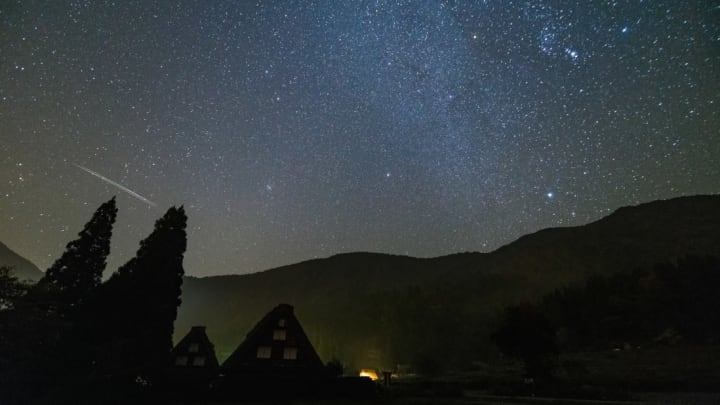October is always a great month for skywatching. If you missed the Draconids, the first meteor shower of the month, don't despair: the Orionids peak this weekend. If you've ever wanted to get into skywatching, this is your chance.
The Orionids is the second of two meteor showers caused by the debris field left by the comet Halley. (The other is the Eta Aquarids, which appear in May.) The showers are named for the constellation Orion, from which they seem to originate.
The shower is expected to peak overnight from Sunday, October 21, to Monday, October 22, when you can plan to see 15 to 20 super-fast meteors per hour. The best time for viewing is between 2 a.m. and 5 a.m., when Orion appears completely above the horizon. Make a late-night picnic of the occasion, because it takes about an hour for your eyes to adjust to the darkness. Bring a blanket and a bottle of wine, lay out and take in the open skies, and let nature do the rest.
There's a chance that the Moon might interfere with the meteors' visibility, according to Space.com. Leading up to its full state on October 24, the Moon will be in a waxing gibbous phase, becoming larger and brighter in the sky as the Orionids speed past Earth. Limiting light pollution where you can—such as by avoiding city lights—will help.
If clouds interfere with your Orionids experience, don't fret. There will be another meteor shower, the Leonids, in November, and the greatest of them all in December: the Geminids.
A version of this story appeared in 2017.
